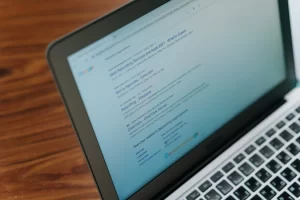When you hear about marketing, you must be worried about how to reach global customers immediately. However, if you are a local business owner, you don’t need to be concerned about all the sophisticated marketing techniques to reach customers around the world. Instead, think small and make as much of an impact as possible in your local area.
For small businesses, local marketing is a crucial component of a larger marketing strategy because it can put your brand in front of a wider local audience likely to use your products and services soon. But what can you as a business owner do to expand your small business’s audience in your local area?
Connecting with the right local customers is the key to successful local marketing. Reaching your target audience is simple if you use the right strategies. This guide offers practical ways to use email, social media, videos, and images to enhance your local marketing strategy drastically.
Local Marketing Using Email
Despite being one of the oldest forms of digital communication, email is the most popular. Although it is a necessity for business, getting it right is not always straightforward. You have the chance to communicate with your customers directly through email marketing. It enables you to get in touch with them whenever you want.
For small local businesses, the advantages of email marketing are not always immediately apparent. But, when done right, using email for your local marketing can give you the following:
- Allows you to hit your target audience wherever they are;
- Helps you recognise where you can improve by being able to track your metrics over time;
- Offers cost-effective marketing strategies with huge ROI potential;
- An easy way to stay in touch with your network that can maintain consistent outreach and increase awareness and
- Generate sales quicker using effective calls to action.
Tips on Using Email for Maximum Success
So, you’ve made the decision to use email marketing. What’s next? You must first understand that email marketing serves to build, secure, and maintain relationships.
Yes, you’ll probably achieve other objectives along the way, such as raising customer engagement and ROI, but keep in mind the recipients of your emails. In light of this, we have gathered some tips on using email for maximum success.
Always Start with a Plan
Your first email marketing strategy doesn’t have to follow a specific formula as long as it responds to the following questions:
- Why am I sending the emails?
- Who are the recipients of my email?
- What can I offer if they will subscribe?
- What is the goal of my email?
Following your responses to these questions, you should map your customers’ journey. To be able to anticipate any needs or inquiries your customers may have along the way, you must be familiar with the path they take from lead to conversion.
Build a Segmented Email List
Segmenting your list enables you to send personalised and pertinent content that your subscribers are more likely to engage with than sending the same mass email to your entire list every time. After all, effective email list segmentation can increase open rates twofold.
The customary fields are name and email address, but gathering more demographic data will enable you to divide your audience into groups according to age, gender, location, or other criteria.
Create Personalised Messages
It’s time to make content specifically for the people in that group after you’ve divided your list based on purchase history, interests, or other factors. Perhaps you want to address them by name and recommend something they’ll adore, or perhaps something they expressed interest in has gone on sale, or there is an event taking place nearby.
Check Your Metrics
Examining the data to determine what works, what you could do better, and what you can live without will help you continue to develop and improve your email marketing skills. To ensure long-term email marketing success, keep an eye on your metrics, retarget subscribers who don’t engage, and maintain good deliverability.
Local Marketing Using Social Media
Why should you spend time and money on local business social media marketing? If you don’t, you might be losing out on a sizable audience. Engaging with customers on social media is a crucial marketing strategy for small businesses. Social media lets you connect with current customers, grow your customer base, and increase brand awareness.
The percentage of Australians who use social media regularly has been rising steadily. According to a recent study, compared to just 58 per cent in 2015, approximately 82.7% of Australians are active users as of February 2022.
If you use social media platforms properly, they can prove to be very helpful in the growth of your local business.
Tips on Using Social Media for Maximum Success
As long as you regularly post on social media platforms, marketing on social media is simple for small business owners. Social media platforms like Facebook, Twitter, Instagram, LinkedIn, and Pinterest are popular ones. You can use the following tips below for maximum success when using social media for business.
Identify Your Social Goals
You won’t be able to tell when you succeed or fail if you don’t know what you want to achieve on social media. You’ll probably find it difficult to keep up a flexible strategy without a goal.
From one industry to the next, goals can vary differently. Someone in the coaching industry might look at new registration rates, whereas a retail company might look for direct purchases from social media.
Below are some of the goals that most social marketers identified that might help you build your initial social goals for your business:
- Increase brand awareness, web traffic, and community engagement;
- Generate leads and sales;
- Share quality content;
- Grow social media networks and influencer marketing initiatives.
Define Your Key Metrics
Consider your key metrics as the road map to get you to your social goals. Below is a cheat sheet with some of the most important social media marketing metrics.
- Reach/Impression – The number of times an individual saw your message or reached your post.
- Engagements – How frequently someone has responded to your message, including Likes, Favourites, Shares, Retweets, Clicks, Replies and Follows.
- Site Visits – The number of people who have viewed your profile page.
- Mentions – The number of social media mentions of your brand.
- Followers – The number of people who follow you on social media.
- New Sales/ROI – The new revenue from social visitors can be monitored by website analytics and UTM tagging.
Identify Your Target Audience
Local businesses can benefit greatly from social media’s ability to reach a targeted audience, but first, you must identify that audience. Think about things like:
- Age
- Location
- Career
- Interest
- Education, etc.
Keeping this in mind, the more specific you can be, the better. This will give you the tools you need to build a solid social media marketing strategy around these specific users and adopt a targeted strategy to speak to the right people at the right time.
Plan What to Share
Look no further than what has previously produced the best results when determining what content to post. If you’ve previously published content on social media, tools like Twitter Analytics or Facebook Insights can help you figure out what connected with your audience the most.
Build Engagement
If you don’t have the most niche product worldwide, your clients will probably talk about you and your business on social media. It is your responsibility to respond to their messages to improve the user experience, regardless of whether they directly tag you or use specific keywords and phrases that are related to your business. Keep an eye out for discussions or posts on your social media platforms that require a response.
Track Your Results
You can begin to gauge the success of your efforts once you’ve identified the metrics that are most important to your brand and invested time in posting and engaging on social media. Your time and the amount of social media you use will determine how frequently you analyse your results on these platforms. Keep in mind that tracking metrics is crucial for improving your strategy.
Local Marketing Using Videos
Are you interested in utilising the potential of video for your expanding business? If so, you’ve found the right place.
According to Forbes, 90% of consumers say videos influence purchasing decisions. 64% of people claim that watching videos increases their likelihood of purchasing. Accordingly, businesses using video in their marketing experience a 41% increase in search traffic compared to those who don’t.
Including video in the mix might seem overwhelming, particularly if you lack the time, resources, or technical know-how required for video production. It might seem intimidating to marketers or small business owners, but guess what? It’s not as time-consuming or challenging as you think it is. We have put together a brief guide to assist you in getting started.
Social Media Videos
The majority of customers cite video as their top choice of brand content to view on social media, and most marketers who use video on social media claim it has brought them new customers.
Video is now more prevalent on social media than images and text combined. To increase the effectiveness of your campaigns, you can incorporate video into your social marketing strategy at every stage of the customer journey.
Youtube Videos
You’ve probably already heard that, after Google, YouTube is the second most popular search engine. How does this affect you? More consumers than ever search YouTube for product reviews, how-to videos, and other content, including your own customers.
Making YouTube videos will put your business in front of more customers who are looking for videos about your industry, products, and services.
Website Videos
Did you know that if a website has a video, the average user will stay on it for 88% longer? Really incredible, right? You can add videos to your website in a variety of ways, such as an introductory video on the homepage, product videos, personal blogs, and more.
Additionally, these videos can also be modified for sharing on social media and YouTube.
Email Videos
According to Campaign Monitor, including video in email can increase open rates by up to 19 per cent and click-through rates by up to 50 per cent.
What is even better news? The process of including video in emails isn’t as difficult as it might seem. The videos don’t even need to start playing in your email. Instead, to start getting results, just link to them and include “video” in the subject line.
Build Better Local Marketing Strategies With Us!
Whether you are a small business or have been in the industry for many years now, implementing a local marketing strategy can be competitive and overwhelming. With a lot of marketing options to choose from, it can be a headache to determine which one to choose.
However, with the help of a proven and tested Melbourne SEO agency like TopRankings, your local business marketing journey can take a huge leap of faith in the digital marketing world. Our team of professionals knows what your business needs for it to grow and experience positive results.
So, don’t be afraid to try new marketing strategies for your local business with us! Contact us now so we can plan what’s best for you and your business.



